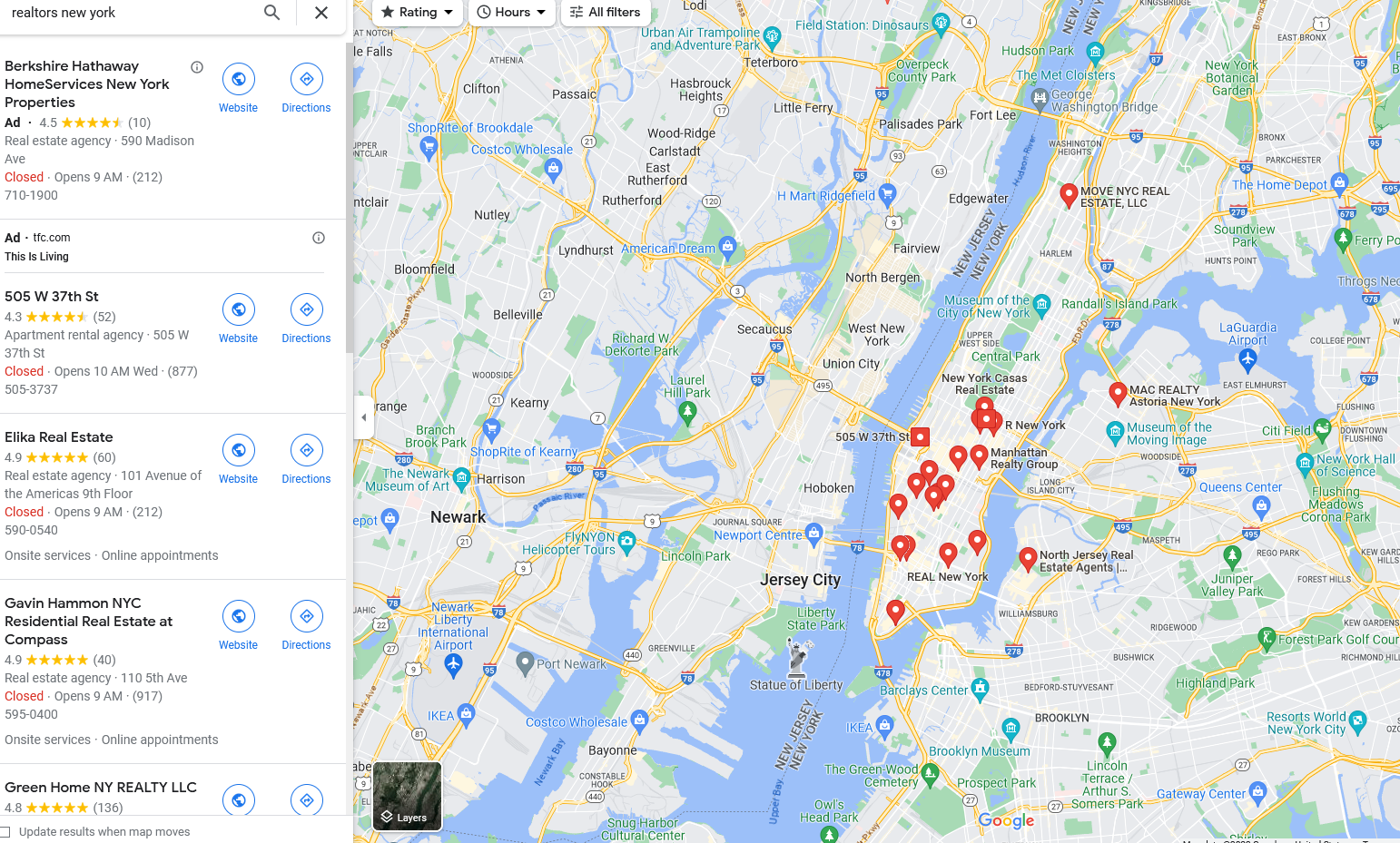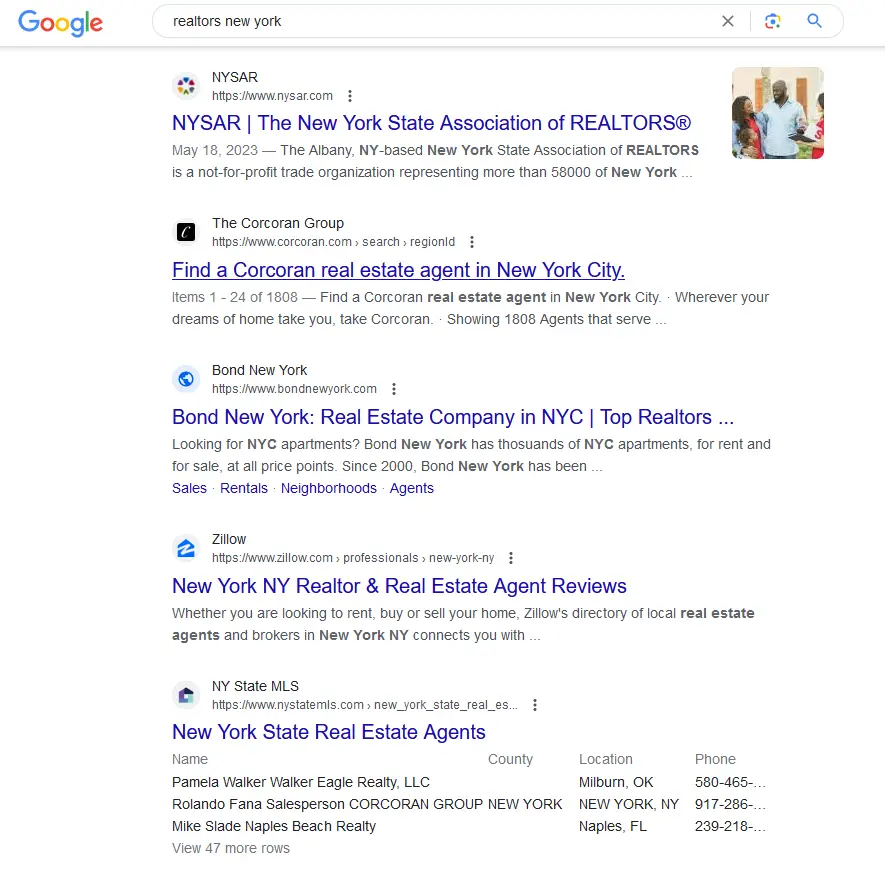As a real estate professional navigating the vast online landscape in search of potential clients and opportunities, you’re often in a race against countless competitors, all vying for the attention of local buyers and sellers.
But how can you stand out amidst the digital noise?
This is where the power of local SEO comes in.
And this article will explore the importance of local SEO for real estate professionals, uncover the key components that can skyrocket your rankings in 2023, and arm you with seven tips to boost your local SEO game.
So let’s dive in, shall we?
Why Is Local SEO Important for Real Estate Professionals? (5 Benefits)
Being a real estate professional with an arsenal of stunning properties to showcase, you may have the knowledge, expertise, and drive to help clients find their dream homes.
However, can your potential clients find you? Because if not, it’s like having a hidden treasure buried deep within a forest, and you don’t want to be that hidden treasure.
This is where local SEO swoops in to save the day.
But what is local SEO, and how does it differ from traditional SEO?
Local SEO, or search engine optimization, is about boosting your online visibility and ensuring your real estate business appears prominently in local search results.
While traditional SEO aims for broader visibility on a global or national scale, local SEO zooms in on a specific geographic area, targeting localized keywords, optimizing GMB (Google My Business) profiles, managing citations and directories, and leveraging reviews and localized content.
So local SEO is a bit like having a magical compass that guides potential clients right to your doorstep.
So why is it important for real estate specifically? The above explanation may have already given you some clues…
1) Nailing that “Near Me” Search
Picture someone new in town, searching for a reliable real estate agent or agency nearby.
They whip out their phone and type in “real estate agents near me.”
Now, if you’ve optimized your website and online presence for local SEO, you increase your chances of being at the top of those search results. It’s like being the first person they meet in their quest for a new home.
2) Hyper-Targeting Your Audience
With local SEO, you can focus your real estate lead generation efforts on a specific geographic area, honing in on potential clients looking to buy or sell properties in your target location.
This means less time wasted on uninterested parties and more time building relationships with those who truly matter, hence more high-quality real estate leads.
3) Dominating the Google Map Pack
Ever noticed those neat little map snippets that pop up at the top of Google’s search results when you search for a local service?
That’s the Google Map pack and prime real estate (pun intended) for local businesses.
By optimizing your real estate website and online listings, you increase your chances of appearing in this coveted spot, where potential buyer and seller clients can easily find and contact you.
4) Building Trust and Credibility
Local SEO isn’t just about ranking higher in search results; it’s also about building trust with your audience.
When your business consistently appears in local search results, it sends a signal to potential clients that you’re a reliable, established player in the real estate game.
And let’s face it; trust is crucial when making big decisions like buying or selling a home.
5) Beating the Competition
Real estate is a competitive industry, with agents and agencies vying for the attention of potential buyers and sellers.
You can gain an edge over your competitors by implementing effective local SEO strategies.
Suppose your competitors don’t have any other lead generation methods in place, and it would only come down to SEO.
If you’re the one showing up in local search results while your competition is nowhere to be found, who do you think potential clients will choose to work with?
Exactly, it’s you…
7 Key Components of Local SEO for Real Estate Professionals (Ranking Factors 2023)
To identify the key components of local SEO for real estate professionals, we must look at the current statistics regarding ranking factors or signals.
Why?
Because Google is well-known for changing its search algorithm almost like other people change their underwear. This metaphor only works if you change it daily. But you know that already…
I found an interesting study done with local search experts in my research. It was a poll to determine which local ranking factors these experts considered most important.
It was divided into two categories of local search results: local pack/finder and local organic.
If you wonder what this means…Local pack results look like this:

Local finder results like this:

And local organic search results look like this:

And based on the poll, the ranking factors for local SEO for local pack/finder search results were weighted as follows by the local search experts:
- 32% GBP (Google Business Profile) signals
- 19% On-page signals
- 16% Review signals
- 11% Link signals
- 8% Behavioral signals
- 7% Citation signals
- 6% Personalization
And for the local organic results, the weighting looked like this:
- 36% On-page signals
- 26% Link signals
- 9% Behavioral signals
- 9% GBP (Google Business Profile) signals
- 7% Personalization
- 7% Citation signals
- 6% Review signals
Now you may wonder what all these factors mean, and I will get to that right away…
1) GBP (Google Business Profile) signals
Google Business Profile signals impact the visibility and ranking of your Google Business Profile.
Key signals include:
- Accurate business information
- Reviews and ratings
- Review responses
- User engagement
- Photos and videos
- Business category
- Proximity
- Click-through rate
- Overall online presence.
2) On-Page Signals
On-page signals are the breadcrumbs you leave on your web pages to guide search engines. Key elements include:
- Title tags: Captivating headlines with relevant keywords.
- Meta descriptions: Compelling summaries to entice searchers.
- Heading tags: Organize content and enhance readability.
- URL structure: Clean, keyword-rich URLs for search engines and users.
- Keyword optimization: Strategically incorporate keywords in your content.
- Image optimization: Compressed images with descriptive alt tags.
- Internal linking: Connect pages with relevant anchor text.
- User experience (UX): Fast, mobile-friendly, and easy-to-navigate websites.
- Structured data markup: Additional context for search engines.
By optimizing these on-page signals, you’ll captivate search engines like Google and improve your website’s visibility.
3) Review Signals
Review signals consist of various factors associated with customer reviews and ratings that influence the visibility and perception of a business on online platforms.
These signals significantly influence consumers’ decision-making and can impact a business’s online reputation.
Let’s delve into the key elements of review signals:
- Quantity of reviews
- Review quality (e.g., sentiment and overall rating)
- Review velocity (the pace at which new reviews are generated)
- Review diversity
- Review recency
- Review responses: Engaging with customer reviews by responding to them demonstrates active involvement and a commitment to customer satisfaction.
- Appearing across multiple review platforms (e.g., Google, Yelp, or industry-specific platforms)
- Review sentiment analysis
- Review aggregation: aggregating reviews from multiple platforms onto the business’s website or other platforms can provide potential customers a comprehensive overview and convenience.
- Review rating schema: Utilizing structured data markup (such as schema.org) to mark up review ratings on the website can help search engines understand and display review ratings in search results, increasing visibility and credibility.
4) Links Signals
Generally, in SEO, link signals refer to the factors associated with incoming links to a website.
These signals are significant in determining a website’s authority, credibility, and relevance.
Picture them as endorsements from other websites, vouching for the value and trustworthiness of your online presence.
So what are the key elements of these link signals?
- Quantity of Links: The number of links pointing to your website is an essential signal. Generally, the more high-quality and relevant links you have, the better.
- Quality of Links: Not all links are created equal. High-quality links from reputable and authoritative websites carry more weight.
- Link Diversity: A diverse link profile with links from various domains and sources demonstrates your website’s broad appeal and reach.
- Link Relevance: Links from topically relevant websites to your industry or content provide stronger signals.
- Anchor Text: The words used in the clickable portion of a link (anchor text) provide context to search engines.
- Link Authority: Links from authoritative websites—those with high trust and credibility—carry more weight.
- Link Placement: The placement of links within the content matters. Links within the body of an article or page tend to be more valuable than those in footers or sidebars.
- Link Velocity: The rate at which new links are acquired can influence search engine perception. Natural and organic link growth over time is preferable to sudden spikes or a stagnant link profile.
- Link Context: The context surrounding the link, including the surrounding text and the relevance of the referring page’s content, adds additional signals.
- Link Building Practices: The ethical and strategic approach to link building is important. Building links through genuine relationships, producing high-quality content, and avoiding manipulative tactics are key to establishing a strong and sustainable link profile.
5) Behavioral Signals (User Engagement)
In local ranking signals, behavioral signals (user engagement) refer to how users interact with your website and their level of interest and involvement.
You could also consider it a digital courtship—a captivating experience that keeps users returning for more.
Let’s explore the key elements of user engagement:
- Click-Through Rate (CTR): When users see your website in search results, a high CTR indicates that they find your listing enticing and click to explore further.
- Bounce Rate: A low bounce rate signifies that users are captivated by your content and stay on your website for a significant amount of time
- Time on Site: The longer potential buyers and sellers stay on your website, the more invested they become.
- Pages per Session: When users explore multiple pages during their visit, it shows genuine interest and curiosity.
- Social Sharing: When users find your content valuable enough to share with others, it amplifies your reach and establishes your authority in the digital realm.
- Reviews and Comments: User engagement extends beyond the website itself. Reviews and comments left by users reflect their level of involvement and can influence others’ perceptions.
- Click-to-Call and Click-for-Directions: In the real estate world, potential buyers or sellers may seek to contact or locate your business. Engaging with click-to-call or click-for-directions buttons shows their intent to take action and interact with you in the physical realm.
- Conversion Rate: Ultimately, user engagement culminates in conversions—submitting a contact form, scheduling a property tour, or making a purchase. It’s the desired outcome of a captivating user experience.
6) Citation Signals
Citation signals are like digital footprints that validate your local presence.
In local SEO, citation signals are how your real estate business information is mentioned across various online platforms.
They inform the establishment of authenticity, credibility, and prominence of your real estate business in local search results.
Imagine them as a trail of breadcrumbs that lead potential clients straight to your doorstep.
Which are the key elements of citation signals?
- Consistency of NAP (Name, Address, and Phone Number) and this information is displayed across different platforms.
- Being listed in reputable business directories (e.g., Yelp, Google My Business, and Zillow)
- Niche and local directories specific to the real estate sector or local community enhance your citation signals.
- Quality and authority of directories
- Accuracy of information
- Reviews and ratings associated with your business citations (can impact consumer perception and influence their decision-making process)
- Being cited by relevant real estate associations or organizations
- Mentions of your business on social media platforms contribute to your citation signals.
7) Personalization
Personalization is a bit like art. It’s how you tailor experiences to the unique preferences and needs of your potential buyers and sellers.
In local SEO, personalization refers to customizing content, search results, and recommendations based on a user’s location, search history, and other relevant data.
It’s like having a digital concierge that anticipates your desires and serves up information specifically curated for your prospects.
What are the key aspects of personalization?
- Location-based personalization: Search engines and online platforms use a user’s location to provide localized results. When someone searches for “real estate agents,” the results will prioritize agents in their area.
- Search History and Behavior: Search engines analyze a user’s search history and behavior to personalize their search results. If someone frequently searches for luxury homes, future search results may prioritize luxury real estate listings.
- User Preferences and Settings: Users can customize their preferences and settings on various platforms. For example, they might indicate their preferred location or property types of interest. Platforms then tailor content and recommendations accordingly. An example would be the saved property searches you may offer on your real estate website. Or, recently, what AI could support you with (e.g., the tool Roof AI)
- Previous Interactions: Online property platforms can consider users’ previous interactions with content, such as properties viewed, saved searches, or inquiries made. They use this data to offer personalized suggestions and recommendations.
- Device and Contextual Personalization: Personalization also extends to the device and context in which a user accesses content. Responsive websites adapt to different devices, while features like geolocation provide tailored information based on where the user is at that moment.
How to Increase Local SEO Rankings in Real Estate (7 Tips)
Based on the previously discussed local ranking factors relevant to real estate, we can now deduce what you need to do to likely increase your local rankings.
Why do I write “likely”? Because no one knows exactly how Google’s Algorithm works and we rely on the poll of various local SEO experts.
So always take it with a grain of salt until Google goes public, as the Pope will certainly do with the Vatican’s library…Meaning, likely never.
Think of it as tips that are more likely to approach correctness since those local SEO experts from above have seen success with it until now.
They will help to increase your odds of success. So without further adieu and pre-framing, here come the deduced tips for increasing your local SEO rankings in real estate…
1) Google Business Profile (GBP) Signals
- Claim and optimize your Google My Business (GMB) profile with accurate local information.
- Add local keywords in your GMB profile description and business name if applicable.
- Select the correct categories that align with your real estate services.
- Include your local phone number and address on your GMB profile.
2) On-Page Signals
- Optimize your website’s on-page elements with local keywords like city or neighborhood names.
- Create location-specific landing pages for different areas you serve.
- Incorporate local schema markup to provide search engines with structured data about your location.
3) Review Signals
- Encourage local real estate clients to leave reviews on your Google My Business profile and other relevant local review platforms.
- Respond to reviews promptly and engage with customers to show your commitment to the local community.
4) Link Signals
- Build local backlinks by contacting local businesses, organizations, or influencers for partnerships or collaborations.
- Sponsor local events or charities to get backlinks from their websites.
5) Behavioral Signals
- Improve your real estate website’s load speed to provide a seamless experience for local users.
- Optimize your website for mobile devices, as many local searches happen via smartphones.
- Create localized real estate content that addresses your local target audience’s needs and interests.
6) Citation Signals
- Ensure your business information is consistent across local directories, including NAP (name, address, phone number).
- Get listed in local directories and real estate-specific directories relevant to your target area.
7) Personalization
- Customize your real estate content and user experience based on your target audience’s local preferences and interests. This is best done with tools that integrate with your website, such as Roof AI.
- Leverage location-based targeting in your digital advertising to reach potential clients in specific local areas.
This article has been reviewed by our editorial team. It has been approved for publication in accordance with our editorial policy.
- Why Real Estate Conversion Rates Are 6-Times Below Average - March 21, 2024
- How to Manage Your Apartment Advertising Campaign - February 23, 2024
- Finding Marketing Channels for Apartment Advertising - February 12, 2024

